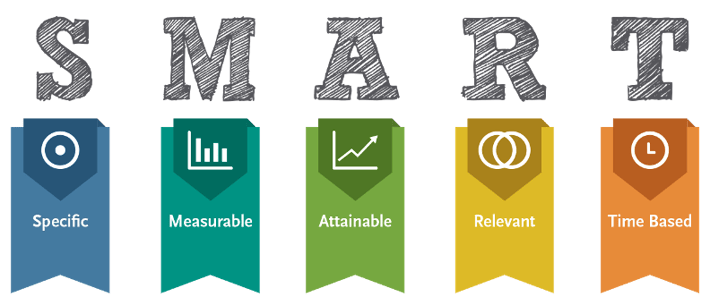2 min read
37 Things You Won't Know About Big Data!
Over a period of time at NewGenApps we have covered Big Data at its core. We have come up with precisely 37 things you can know by just following 7...

There exists huge volume of data that companies have developed over a period of time. From the day companies started recording their transactional data till today, the amount of available data has piled over and over. With the increase in usage of modern technologies like mobile phones, sensors, and social media this data has increased in volume, varsity, and variety. Now, this huge amount of data needs to be strategically utilized to enable companies to generate insights that were previously concealed. To make this happen what you will need is a Big Data strategy that can help you leverage the potential, this new technology has to offer.
Are you sure you know what Big Data Analytics really is?
Know More: 3 Common Reason Accounting to the Failure of Big Data Projects
The impact and successful use cases of Big Data are rapidly rising. Though the potential benefits of Big Data are beyond doubt, business leaders have their concerns. Many companies have successfully implemented Big Data in various functions and many are still figuring out the best way to incorporate it.
We have developed a 7 steps approach that can help you create a successful Big Data strategy.Let's dive into the steps you need to follow to strategically implement Big Data into your current business activities:

Your end goal has the biggest impact on the shape of your overall strategy. You need to decide whether you want to increase the efficiency of customer reps, improve operational efficiency, increase revenues, provide better customer experience or improve marketing. The goal you have should be precise, certain and direct. Any strategy with just the sole purpose of exploring possibilities is likely to end up in confusion. Based on your goal you can choose a methodology, hire employees and select the right sources of data. So create SMART (Specific, Measurable, Attainable, Relevant and Timely) goals and make plans accordingly.
There are 4 proven ways to create a working Big Data strategy. Based on your end goal and availability of data you can choose either of the below big data strategies to attain successful results:
It involves using transactional data like customer purchase history, turnover and inventory levels to make decisions relating to store management and operational supremacy. This data is available within the organization and gives insights into subjects relating to short term decision making and long term planning. It works well with companies with large historical databases that can be leveraged without much pain. It can also help with better customer segmentation and targeting.
Know More: 5 Competitive Advantages of Big Data in Business
This approach makes heavy use of data mining and research to find solutions and correlations that are not easily discoverable with in-house data. Currently, it is used by companies focusing on robust inbound marketing to generate insight on prospects behavior on the website. It helps you identify new segments of data and bring out insights regarding customer’s behavior and preferences.
Social analytics measures the non-transactional data on various social mediums and review sites like Facebook, Twitter and Google+. It is based on the analysis of conversations and reviews that come up on these platforms. It brings out three primary analytics viz. awareness, engagement, and word-of-mouth. In-stream data analysis techniques like sentiment analysis prove very effective in these cases. It gives insights on the brand identity and customer’s opinions on new offerings and services. The social analysis also proves effective in predicting spikes in demand for certain products.
Decision science refers to the experiments and analysis on non-transactional data, such as consumer-generated content, ideas, and reviews. Decision science is more about exploring possibilities than measuring known objectives. Unlike social analysis, that is based on engagement analytics, decision science focuses on hypothesis testing and ideation process. This involves extensive use of text and sentiment analysis to understand customer’s opinions about new services and schemes.
My Starbucks Idea is the perfect example of decision science. This program enables consumers to submit, share & vote on ideas for Starbuck’s products, customer experience, and community involvement. Over 100,000 ideas have been collected to date. Starbucks has an “Ideas in Action” section to showcase which ideas are in the review process.
Now that you have a brief idea of the types of big data strategies, you can use either of the above or combine multiple strategies to use Big Data in your organization.
Know More: How to Create a Successful IoT Strategy

To leverage Big Data particularly historical databases you might need to create many infrastructural changes in the company. If the old company data was stored in traditional formats it might not facilitate the running of complex algorithms and analysis. Moreover, different departments may need integration to collect and streamline data to put it to more usable format. Integration between different departments is key to bringing and implementing changes at scale. If your existing infrastructure is not interlinked properly then you will need to prepare for big changes.
Human Resources is one of the most critical aspects of creating a Big Data strategy. Your Big Data team must have statisticians to make sense out of data, business analysts to communicate insights to the decision makers and key decision makers themselves who are capable to lead the team. Without a proper team, the discussions on Big Data may revolve around jargons that are not clear to either of the teams. A proper language needs to created to facilitate discussions between the business leaders and the technical team. If this is not done properly then no side will be able to understand the insights and the entire execution will end up with regrets and blame games.
Know More: 8 Key Ways to Get the Best ROI from Big Data
The key use of Big Data is to generate insights that can help companies serve their customers in a better way. Customer oriented marketing is the new way of approaching the market and making revenues. At the end of the day, you need to communicate to your customer that you are there to solve a problem and not just to make money. Big Data provides such insights into the customer mind set that can be used to improve and even alter the current marketing practices. Another thing you need to focus on is to create a fine line between data gathering and privacy abuse. Your customers should feel like they are spied.
Many times it happens that the insights created by the statisticians are beyond comprehension for staff. The data, analytics, and insights that are collected by the analysts needs to be communicated precisely to the implementation team. The information should be comprehended and represented in a way that its value is identified by people who are not from a statistical background. This can be done by using graphical representation and by communicating direct instructions to the teams involved.
Know More: Top Big Data Trends to Watch for in 2017
This goes without saying. While implementing disruptive technologies many hurdles might come up that no one initially thought about. You need to adjust your budget, people, and ideologies based on the circumstances and insights you gather. It is best to start with a high-level plan and make changes as the need be. At the end, you might come up with an action plan that is nowhere close to the initial idea but it will be worth the toil.
Read More: 37 Things You Won't Know About Big Data
Here you have, 7 steps that you can follow to create a successful Big Data strategy. If you are having trouble utilizing Big Data on your own then it is best to outsource some of your work to specialists. This idea works exceptionally well as it saves the cost spent on recruitment and training and you can have people who are capable to guide you through the process. If you are looking for experts that can guide you through the steps for creating and implementing a Big Data strategy that you can definitely contact us:

2 min read
Over a period of time at NewGenApps we have covered Big Data at its core. We have come up with precisely 37 things you can know by just following 7...

Sir Francis Bacon is the first person known to have said that “knowledge is power” — regardless, it’s been a reliable truism for hundreds of years....

Data Science is a vast term and thus jotting down all the applications can be a daunting task as it is a tech omnipresent. In the present scenario,...
